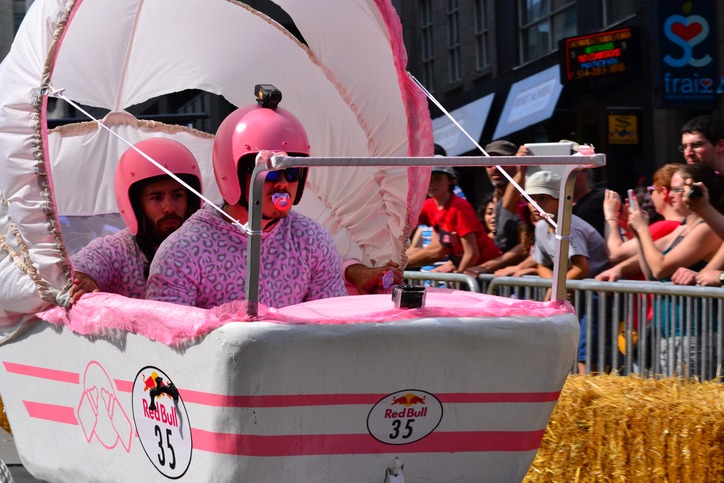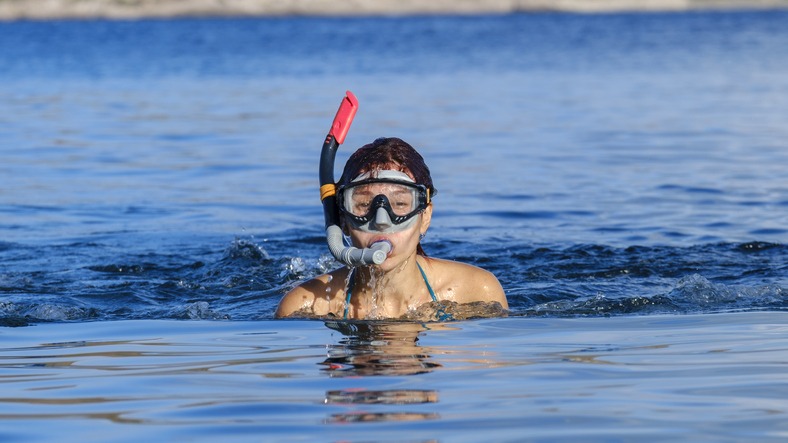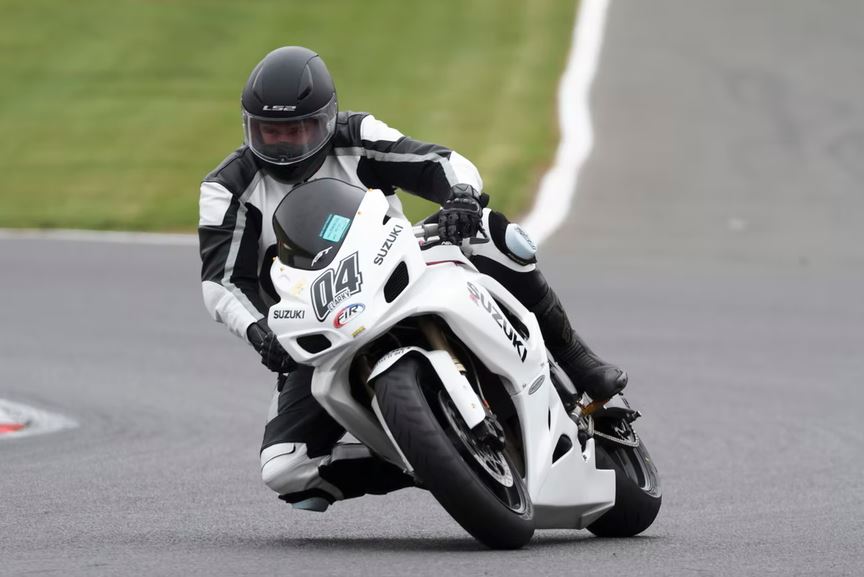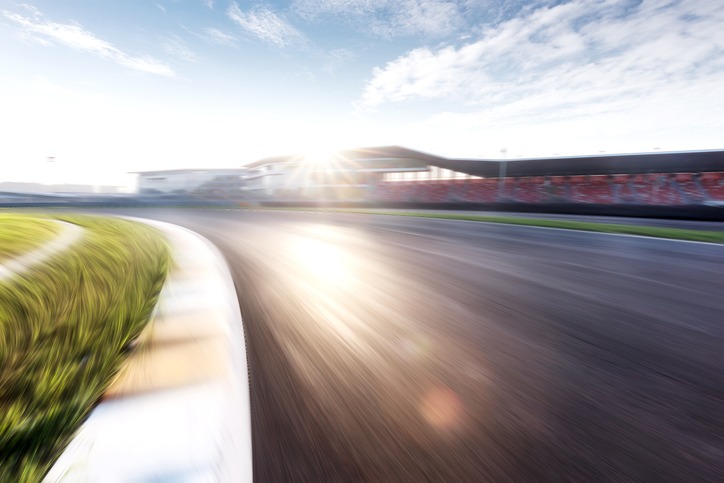Races with the Weirdest Rules or Mechanics

Throughout history, races have pushed the limits of human creativity. Some competitions go beyond the usual speed and endurance challenges by adding unusual twists to their rules. While many events follow standard guidelines, others introduce unique elements that leave participants and spectators both confused and amazed. Here are the races with the weirdest rules or mechanics
Cheese Rolling Race
The annual Cheese Rolling Race at Cooper's Hill in Gloucester, England, has been a strange tradition for over 200 years. Held every spring, participants chase a nine-pound round of cheese down a steep hill. The first person to cross the finish line at the bottom wins the cheese. However, due to the hill's dangerous slope, injuries are common.
The race gained more attention in recent years, especially after videos of the chaotic event went viral in the early 2000s. Despite concerns about safety, the event continues to attract competitors and spectators from around the world. In 2019, Delaney Irving won the women's race, even after being knocked unconscious during her tumble.
This unusual event has survived changes to its format. Officials stopped organizing the race after 2010 due to safety concerns, but local enthusiasts kept it alive.
Wife Carrying Championship
Originating in Finland, the Wife Carrying Championship takes place every year in the town of Sonkajärvi. The event first started in 1992, inspired by a local legend about a bandit who would steal women from nearby villages. Teams of two, with one partner carrying the other, must navigate an obstacle-filled course. The winning couple receives the wife's weight in beer.
The course is about 250 meters long and includes hurdles such as water-filled ditches and sand traps. The official carrying technique is the "Estonian" style, where the wife hangs upside down on her partner's back. The event has since grown, with participants coming from countries like the United States and Australia.
In 2023, Finnish couple Taisto Miettinen and Kristiina Haapanen set a new record, completing the race in just over a minute. The race has become a lighthearted but fiercely competitive event that attracts global media attention.
Man vs. Horse Marathon
The Man vs. Horse Marathon, held annually in the Welsh town of Llanwrtyd Wells, began in 1980. The idea came from a pub argument about whether a man could outrun a horse over a long distance. The race covers a 22-mile cross-country route, with runners competing against riders on horseback.
Over the years, the race has gained a reputation for being unpredictable. The first human victory didn't come until 2004, when Huw Lobb managed to beat the fastest horse by just two minutes. Since then, humans have won the race twice more, proving it's possible under the right conditions.
Weather, terrain, and strategy all play key roles in determining the winner. Runners often have the advantage in rougher parts of the course, where horses struggle. The race remains one of the few where animals and humans compete directly.
Red Bull Soapbox Race

The Red Bull Soapbox Race is an international event where teams build their own gravity-powered soapbox cars and race downhill. The race has been held in cities around the world since 2000, including Los Angeles, London, and Tokyo. The vehicles are often wildly creative, with designs ranging from giant hamburgers to flying pigs. The main goal is to cross the finish line, but style points are also awarded for creativity and showmanship.
Each course is different, and participants must navigate sharp turns and ramps. Crashes are common due to the lack of brakes and the DIY nature of the cars. In 2021, a team from Seattle won first place with their "Doom Wagon," a Mad Max-inspired soapbox car, impressing judges with both speed and style.
The event is more about entertainment than competition, and the atmosphere is lighthearted. Thousands of spectators gather to watch the crashes and cheer on the teams. It's one of the few races where winning is secondary to putting on a good show.
Cooper's Hill Egg-and-Spoon Race
In the small town of Brockworth, England, the Cooper's Hill Egg-and-Spoon Race takes place every summer. This race challenges participants to run downhill while balancing an egg on a spoon. What makes this race especially tricky is that it takes place on the same hill used for the Cheese Rolling Race, which is known for its dangerous slope.
The event dates back to 1958 and was originally created as a safer alternative to the Cheese Rolling Race. Participants must keep the egg on the spoon while sprinting downhill, and if the egg falls, they must start over. In 2022, Jane Taylor won the race for the third time, completing the course without dropping her egg once.
Despite its humorous nature, the race requires a surprising amount of skill and balance. The steep hill adds to the challenge, and falls are frequent.
North American Wife Carrying Championship
Similar to the Finnish event, the North American Wife Carrying Championship has been held in Maine since 1999. Teams from across the U.S. compete in this race, following the same rules as the original event. The course is 278 yards long and includes obstacles like mud pits and log hurdles.
The winning team gets the wife's weight in beer and cash. In 2022, Chris and Kala Cole from Delaware took first place with a time of 58.7 seconds. The couple used the "Estonian" carry, where the wife hangs upside down on her partner's back, to navigate the course.
Bog Snorkeling Championship

The World Bog Snorkeling Championship takes place every August in Llanwrtyd Wells, Wales. Competitors swim through a water-filled trench cut into a peat bog using snorkels and flippers. Regular swimming strokes are not allowed, and participants must rely solely on flipper power to propel themselves through the muddy water.
The event started in 1985 as part of a local festival. In 2019, Haydn Pitchforth set a new world record, completing the 120-meter course in 1 minute and 18 seconds. The bog itself, filled with murky and cold water, adds a layer of difficulty to the race, making it both physically challenging and comical to watch.
Extreme Ironing World Championships
The Extreme Ironing World Championships is exactly what it sounds like: participants take ironing boards to remote or dangerous locations and iron clothing. The competition started in Leicester, England, in 1997 and has since grown into a global event. Competitors have ironed clothes while hanging from cliffs, underwater, and even while skiing down mountains.
In 2002, Phil Shaw, the creator of the sport, organized the first official Extreme Ironing World Championships in Munich, Germany. That year, British competitor Ben Gibbons won the top prize by ironing a shirt while parachuting from a plane. Since then, the event has continued to attract adventurous participants from around the world.
While the competition focuses on ironing technique, creativity and location choice play a big role in determining the winner. The event has gained a following for its absurdity, and participants often push the boundaries of where and how ironing can be done.
The Beer Mile

The Beer Mile is a race where competitors must drink a beer, run a quarter-mile, and repeat this process four times until they complete a full mile. The rules are simple: drink a beer at the start of each lap, and if the runner vomits, they must run an extra penalty lap. The race has gained popularity around the world since it first started in the 1990s in Canada.
In 2017, Corey Bellemore of Canada set the current Beer Mile world record, finishing in 4 minutes and 33 seconds. The race's combination of speed, endurance, and beer drinking adds an element of chaos to the competition. Despite its humorous premise, many athletes train specifically for Beer Mile events.
The Beer Mile has become a global phenomenon, with races held in countries such as the United States, Australia, and the U.K. Its combination of athleticism and beer drinking creates a unique challenge for participants and entertainment for spectators.
Conclusion
These unusual races remind us that competition doesn't always follow the same rules. From navigating through a bog to balancing eggs on a steep hill, participants face challenges that require more than just speed. Each event brings its own level of creativity, and it's this uniqueness that keeps people coming back year after year.




